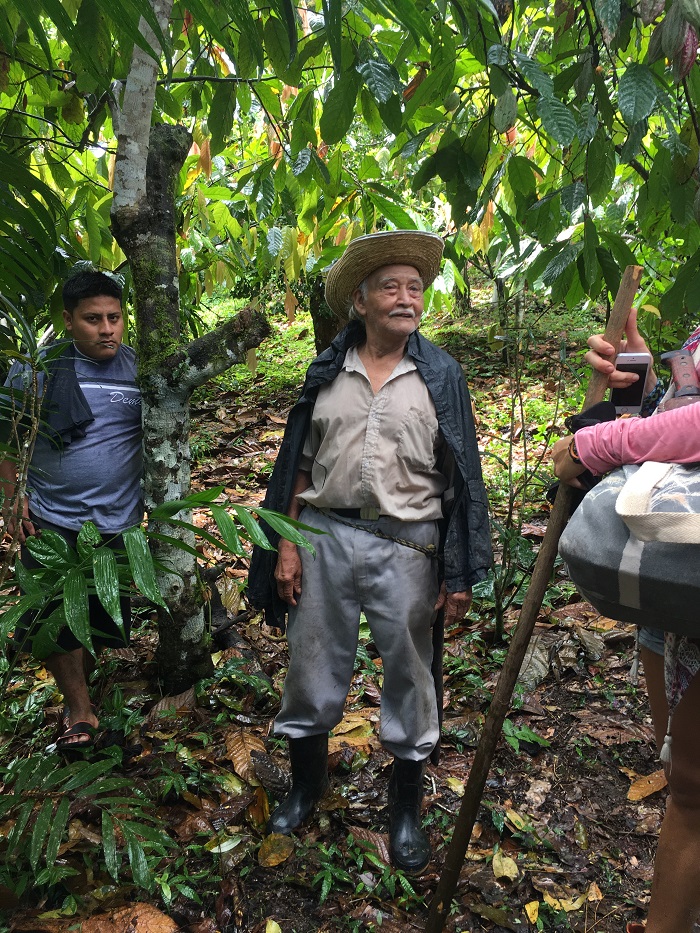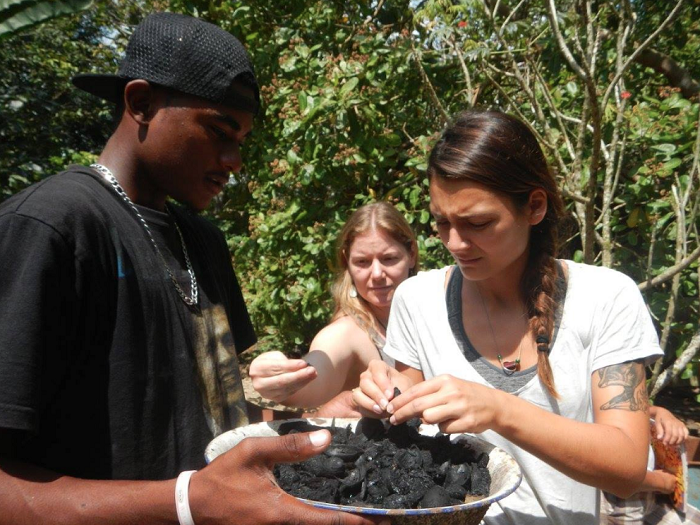
I recently returned from a Permaculture Design Course held at the Maya Mountain Research Farm, a 29-year old, off-grid food forest in Belize. The course was taught by several permaculture experts from all over the world. Each brought their unique background and expertise, but what they all shared was an enthusiasm for biochar. ‘Enthusiasm’ being euphemistic for ‘they all went bananas for it.’
I was unfamiliar with biochar before this course, but now I’m chomping at the bit to experiment with it in my garden. I was doubtful when I learned what it is—charred organic matter—since the concept at first seemed counter-intuitive to my understanding of organic gardening. Shouldn’t I send all my organic matter to the compost pile and definitely not torch it?

But then I learned about how ancient Amazonians used it to transform notoriously infertile soil into meters-deep soil that was so fertile, the same land could be used agriculturally without fallow for centuries. A handful of biochar is full of billions of microscopic crevices that can be thought of as apartment units and condos where microbial life can take up residence, allowing their populations to explode. Since biochar is man-made, it’s presence in ancient soils is impressive anthropological evidence that humans are a geological force with a substantial effect upon ecosystems.
When used as a soil amendment, biochar is effective at storing carbon and trapping greenhouse gases like carbon dioxide, methane, and nitrous oxide in the soil. That means it has potential to offset carbon emissions with a positive effect against climate change if used by enough gardeners and farmers. It’s also recently suspected to enhance the performance of electron pathways in soil, leading to increased biological and chemical soil activity.
It’s available for purchase commercially, but also relatively easy to make. The key concept is to burn organic matter without oxygen and then to put it out before the material becomes ash. It can be made in your own backyard using a metal drum or digging a pit in the ground. Do some digging and you’ll find tips and tricks from backyard gardeners and permaculturists all over the web.
Biochar is so promising in its potential to transform agriculture, and as a strategy to mitigate climate change, that countries all over the world are investing in researching it. Roughly 100 scholastic articles on biochar are published monthly.
I’ll be adding biochar to my soil as I prep my garden beds next week. I’d love for you to join me!

Two resources with detailed instructions on the methods I mentioned are here and here.
Visit UtahStories.com for many more gardening stories this month, and follow us on Instagram for updates on our ongoing demonstration garden.





